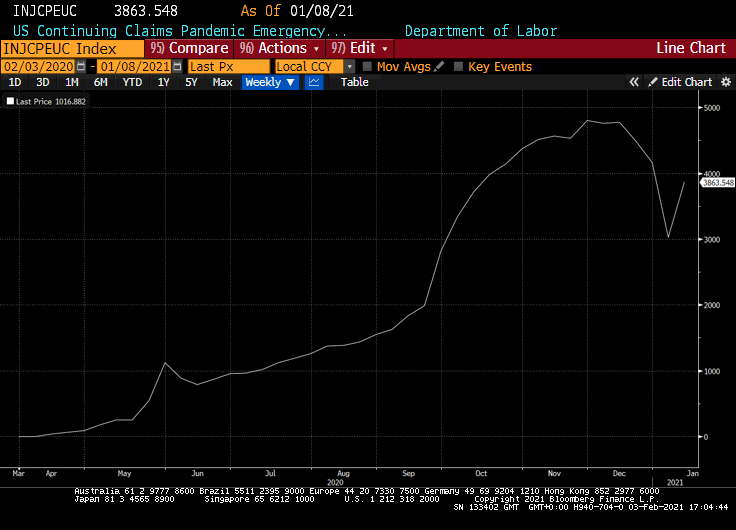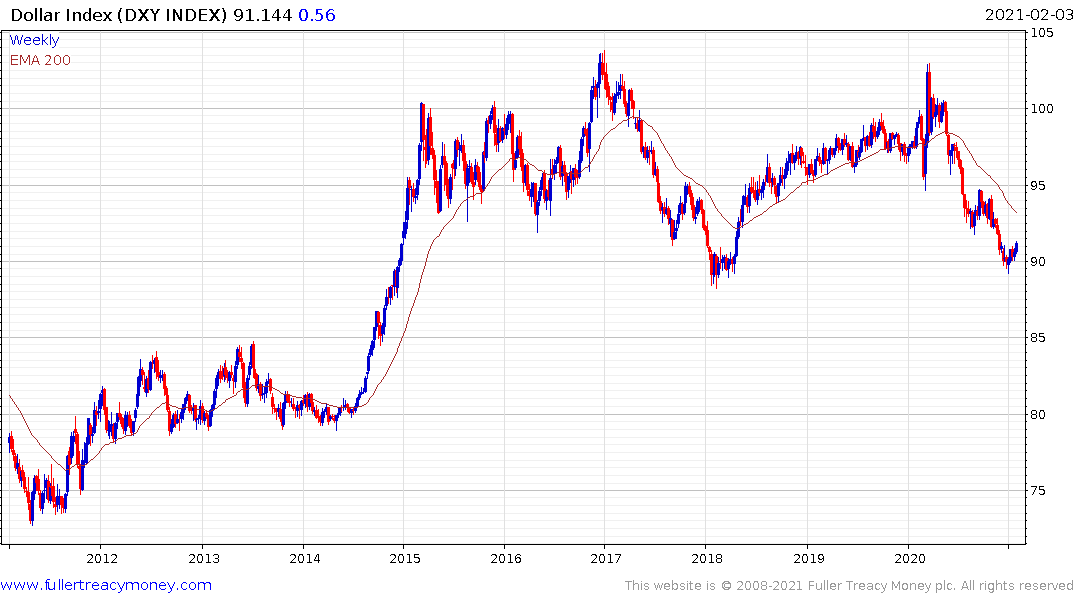Email of the day on the US Dollar
I am a not so new subscriber, I started in 2010. And your service is very valuable for me, so thank you! - Your commentary starts my day.
I understand that your view is that the dollar will depreciate over the coming years. Since I am based in the euro area, and have approx. 50% of my investments in USD, this is a topic that interest me very much.
I enclose a report from Nordea Bank, with a slightly different view. I would be very interested to know your take here.
Thank you for patronage over the last decade and for this well-argued report which I’m sure will be of interest to the Collective. Here is a section:
It's one thing to say you will accept inflation overshooting, it's another thing to do it once inflation is decidedly overshooting - especially with global growth numbers booming at the same time. We therefore expect the market to be back in questioning the pace of the Fed's bond purchase program around summer at the latest (the consensus looks for the first tapering some time in H1, 2022 - too late in our view). A further sell-o in US fixed income, or steepening of US curves in relative terms, will at least reduce the downward pressure on the dollar from a double deficit perspective. It will also weigh on various "fair value" models for the EUR/USD.
The big question for a Dollar investor is whether the Fed is going to stick to its stated interest rate policy. They have said, in plain English, they are not going to taper and not going to raise rates until inflation takes off and not just in a transitory way.
If they flinch at the first whiff of inflation the Dollar will rise. There is no question of that. However, I don’t believe that is likely. The twin deficits are at record highs and the Social Security fund will migrate into terminal deficits this year. It will be fully exhausted within a decade. There is no way the budget is about to be balanced.

There are still millions out of work. The number of people claiming additional support from the pandemic assistance program, on a sustained basis, continues to trend higher. It currently sits at 3.8 million people.
It is reasonable to question whether the Fed has the stomach for higher inflation. However, there is little discussion of how the moratoriums on evictions and the outsized additional unemployment benefits are going to be unwound. The hardship ready to be meted out on consumers represents political suicide for politicians. They are going to need to see robust economic recovery, full opening up and a workout program for missed rents before the additional assistance can be unwound.

I think I’ve been quite clear that the Dollar was due a bounce and it is getting it. The ECB is currently doing more to devalue the Euro than the Fed is to devalue the Dollar. However, the trend higher in the yield curve is not inexorable. It has generally taken about two years for the spread to rise from negative territory to 250+ basis points. A move of that magnitude will cause all kinds of headaches for the government and for the funding costs of the entire economy. We will be back in recession long before it gets that wide and therefore it is inevitable the Fed will re-intervene at the first sign of trouble in asset prices. That will be the catalyst for the next Dollar down-leg. Therefore, the short-term conclusion is the Dollar will continue to rally until the Fed inevitably intervenes and helps to fund the government through Modern Monetary Theory mechanisms.
The counter argument is that the US economy booms in 2021 and blows past all current estimates for growth. That would hasten both inflationary pressures and put upward pressure on yields. Stock market investors are certainly betting this will be the case as earnings come in ahead of expectations which will help to ease worries about valuations. Generally, the early years of an inflationary period are positive for stocks but rising yields eventually cap upside potential. Therefore, the medium-term bull market hypothesis remains rooted in the need for efforts to suppress yields. The only real question is what level represents the choke point.


